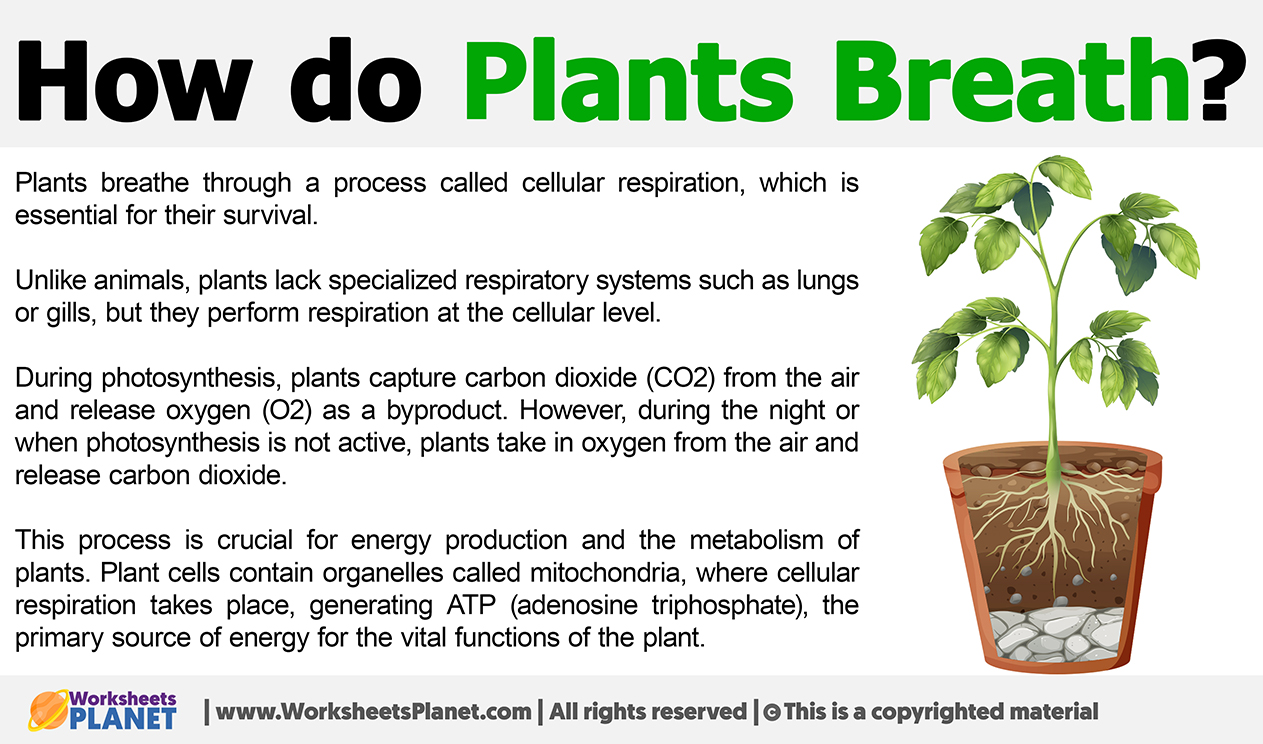Plants breathe through a process called cellular respiration, which is essential for their survival.
Unlike animals, plants lack specialized respiratory systems such as lungs or gills, but they perform respiration at the cellular level.

During photosynthesis, plants capture carbon dioxide (CO2) from the air and release oxygen (O2) as a byproduct. However, during the night or when photosynthesis is not active, plants take in oxygen from the air and release carbon dioxide.
This process is crucial for energy production and the metabolism of plants. Plant cells contain organelles called mitochondria, where cellular respiration takes place, generating ATP (adenosine triphosphate), the primary source of energy for the vital functions of the plant.

